| Name: | |
| Studio: | |
| Studio Master: | |
| Year: | |
| University: |
Five students of AA Design & Make MArch programme designed and built a robotically fabricated Barn in the woodland at Dorset, England. The students used ‘prototyping’ as ‘vehicles’ for design research, developing modes of experimental architectural design that integrated full-scale making. The ambition of the design was to use found natural junctions/forks in trees – structurally, using 3D scanning as a feedback for the robot-arm to fabricate the structure. The final arching structure of the barn is thus formed from forked beech tree components directly sourced from the surrounding woodland.
[caption id="attachment_12673" align="aligncenter" width="900"] Illustration by : Zachary Mollica[/caption]
[caption id="attachment_12674" align="aligncenter" width="900"]
Illustration by : Zachary Mollica[/caption]
[caption id="attachment_12674" align="aligncenter" width="900"]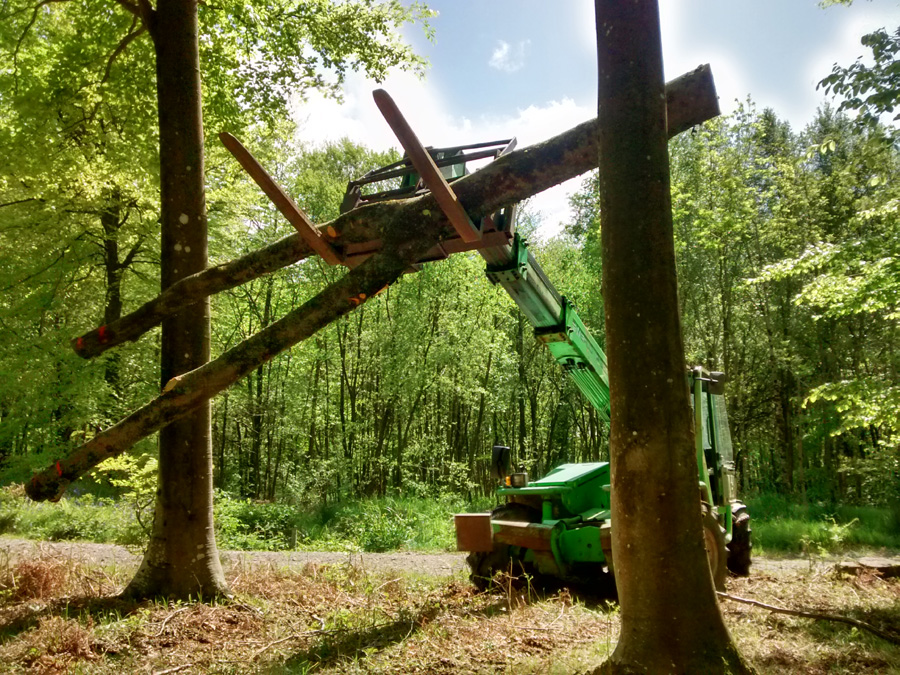 Photo credit: Zachary Mollica[/caption]
[caption id="attachment_12676" align="aligncenter" width="900"]
Photo credit: Zachary Mollica[/caption]
[caption id="attachment_12676" align="aligncenter" width="900"] Illustration by : Zachary Mollica[/caption]
Illustration by : Zachary Mollica[/caption]
The initial responsibility was to survey Hooke Park’s beech compartments in teams, to help in preparing a database of potential forked components, from which the structural concept was developed. Based on the criteria of that concept, 25 forks were harvested from the forest, brought back to the campus, and scanned in 3D. An organization script was used to generate a final arrangement of forks in collaboration with engineers from Arup. This digital model was then translated into fabrication information with which Hooke Park’s new robotic arm transformed each fork into a finished component.
[caption id="attachment_12677" align="aligncenter" width="900"] Illustration by : Zachary Mollica[/caption]
[caption id="attachment_12678" align="aligncenter" width="900"]
Illustration by : Zachary Mollica[/caption]
[caption id="attachment_12678" align="aligncenter" width="900"]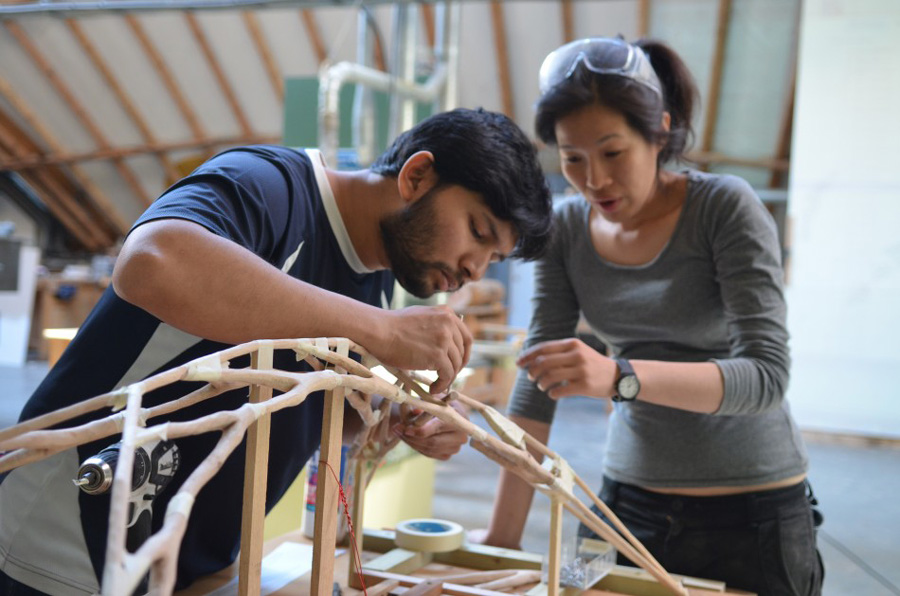 Photo credit: Sahil Shah[/caption]
[caption id="attachment_12679" align="aligncenter" width="900"]
Photo credit: Sahil Shah[/caption]
[caption id="attachment_12679" align="aligncenter" width="900"] Photo credit: Mohaimeen Islam[/caption]
[caption id="attachment_12680" align="aligncenter" width="900"]
Photo credit: Mohaimeen Islam[/caption]
[caption id="attachment_12680" align="aligncenter" width="900"] Illustration by : Mohaimeen Islam[/caption]
[caption id="attachment_12681" align="aligncenter" width="1479"]
Illustration by : Mohaimeen Islam[/caption]
[caption id="attachment_12681" align="aligncenter" width="1479"]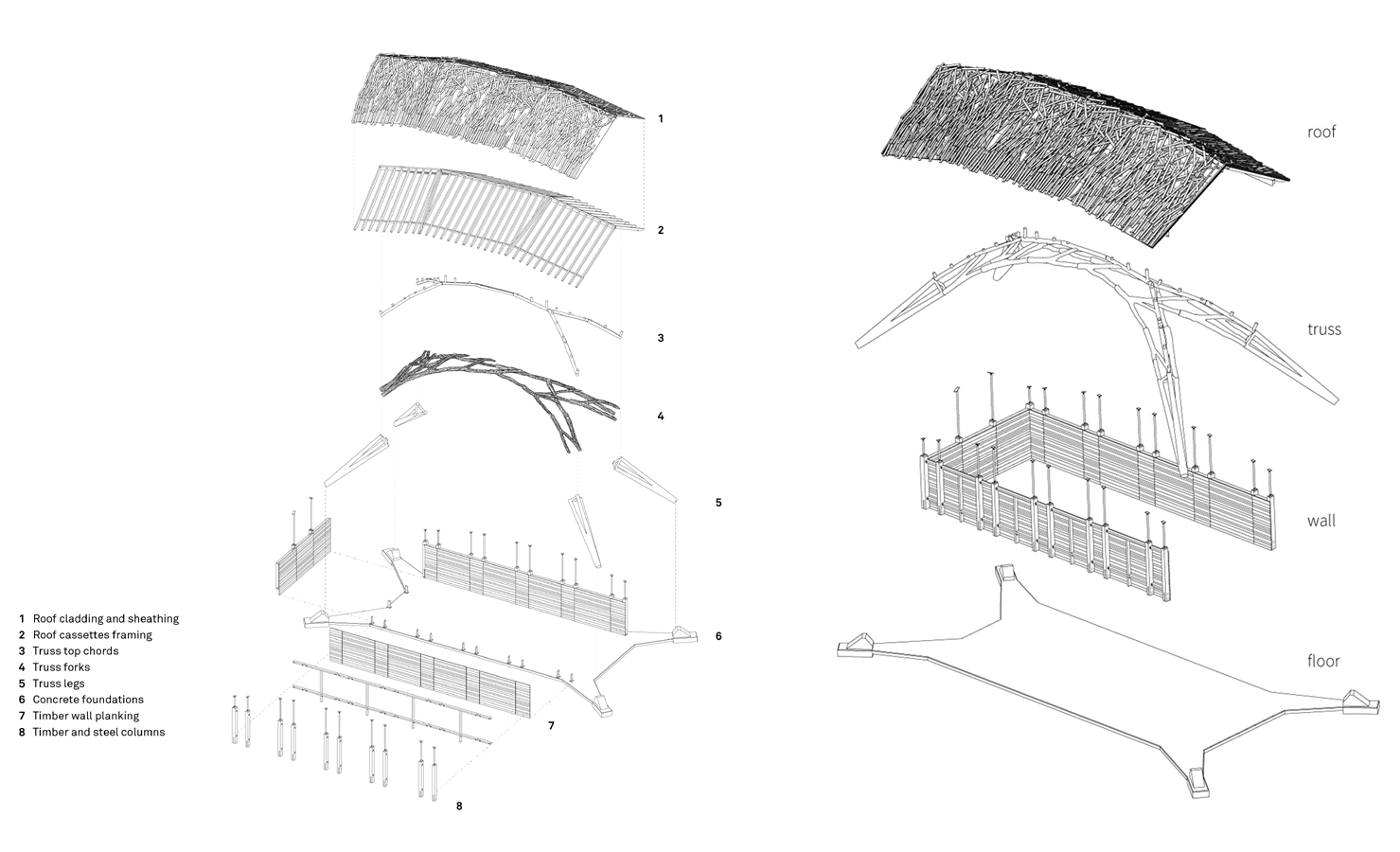 Illustration by : Mohaimeen Islam[/caption]
Illustration by : Mohaimeen Islam[/caption]
The super structure of the barn consists of a wooden roof, suspended from that arching vierendeel truss composed of twenty beech tree-forks and spanning across 25 m x 10 m to cover 180 sqm area. The truss, after being preassembled in Hooke Park’s Big Shed and all other components, in the yard, were then erected on site under the guidance of Dorset craftsman Jack Draper who coordinated the fabrication and site operations. To aid a productive workflow upto construction stage, the building task was divided in four components: Floor & Wall, Roof, Truss, and Truss legs – each one/two of the students with responsibility of designing and testing these FOUR PARTS to finally combine them onsite into a whole building.
[caption id="attachment_12682" align="aligncenter" width="900"]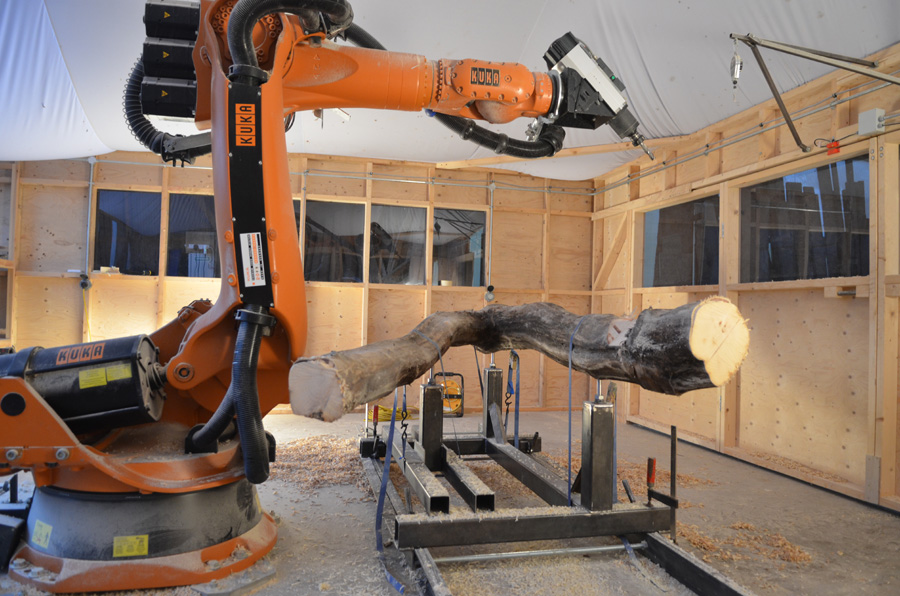 Photo credit: Swetha Vegesana[/caption]
[caption id="attachment_12683" align="aligncenter" width="900"]
Photo credit: Swetha Vegesana[/caption]
[caption id="attachment_12683" align="aligncenter" width="900"] Photo credit: Swetha Vegesana[/caption]
[caption id="attachment_12685" align="aligncenter" width="900"]
Photo credit: Swetha Vegesana[/caption]
[caption id="attachment_12685" align="aligncenter" width="900"]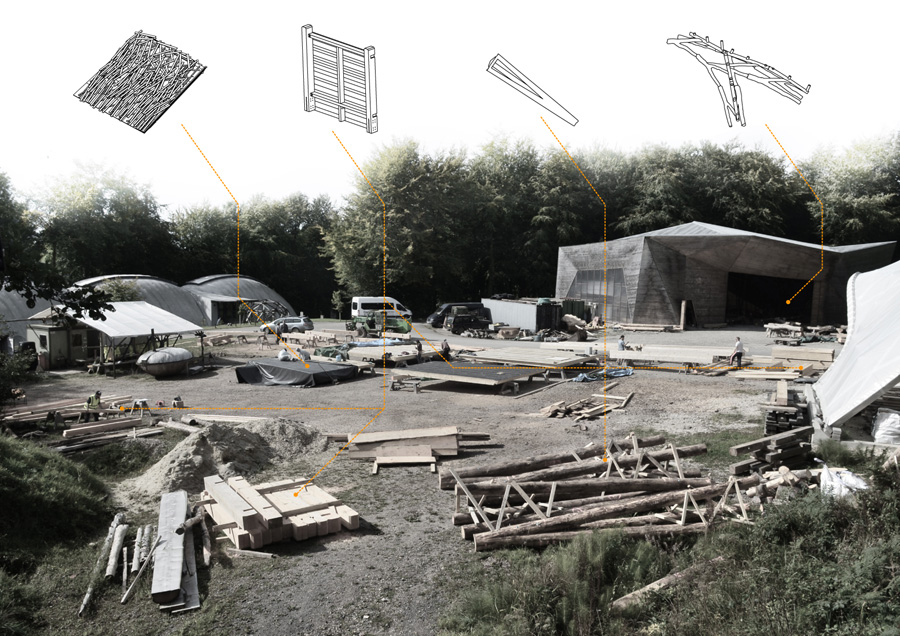 Illustration by : Mohaimeen Islam[/caption]
[caption id="attachment_12686" align="aligncenter" width="900"]
Illustration by : Mohaimeen Islam[/caption]
[caption id="attachment_12686" align="aligncenter" width="900"] Illustration by : Mohaimeen Islam[/caption]
[caption id="attachment_12687" align="aligncenter" width="900"]
Illustration by : Mohaimeen Islam[/caption]
[caption id="attachment_12687" align="aligncenter" width="900"] Illustration by : Mohaimeen Islam[/caption]
[caption id="attachment_12688" align="aligncenter" width="900"]
Illustration by : Mohaimeen Islam[/caption]
[caption id="attachment_12688" align="aligncenter" width="900"]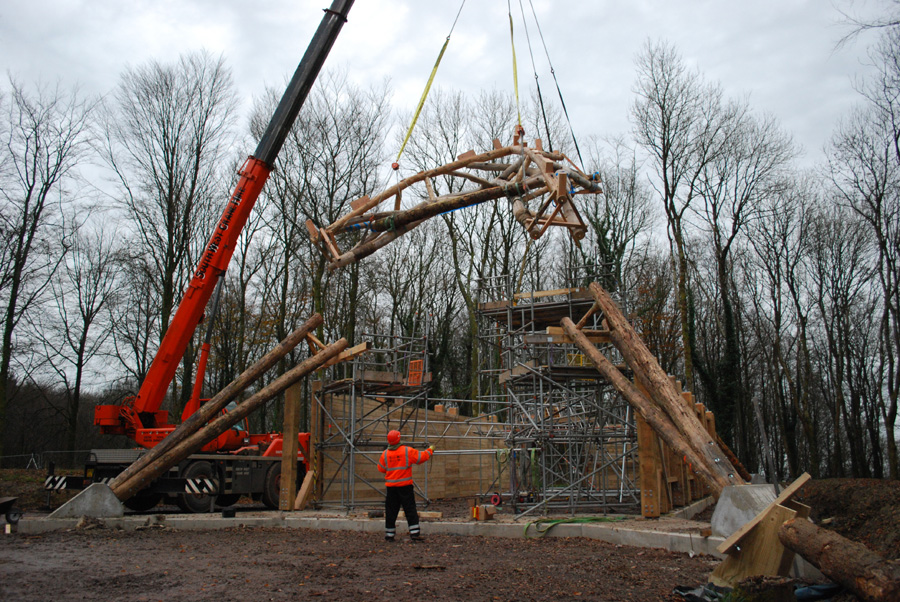 Photo credit: Sahil Shah[/caption]
[caption id="attachment_12690" align="aligncenter" width="900"]
Photo credit: Sahil Shah[/caption]
[caption id="attachment_12690" align="aligncenter" width="900"] Photo credit: Valerie Bennett[/caption]
Photo credit: Valerie Bennett[/caption]
Ar. Mohaimeen from Bangladesh was involved in preparing complete drawing sets and also fabricating components for the floor, wall, roof and making 1:20 model of the actual truss structure. However, his core responsibility at this stage included designing and testing options for the Floor and the Push-wall by making scale models and mock-ups. To test its visual, tactile, and structural integrity, a series of models at 1:20 scale and a mock-up at 1:2 scale, were made to get feedback from the physical objects. At this point, a plan was made to fabricate the various components of the wall which were then to be assembled on site.
[caption id="attachment_12689" align="aligncenter" width="900"]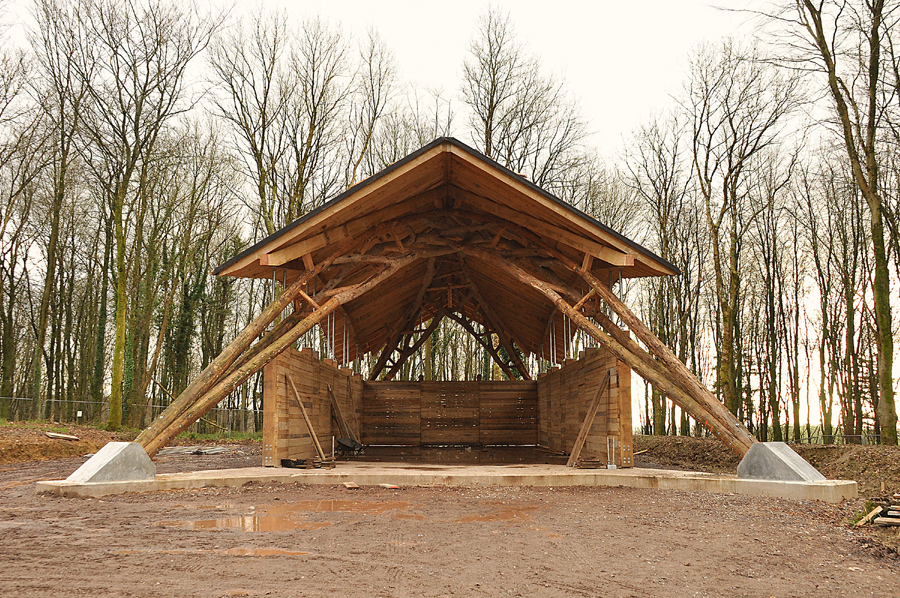 Photo credit: Valerie Bennett[/caption]
[caption id="attachment_12691" align="aligncenter" width="900"]
Photo credit: Valerie Bennett[/caption]
[caption id="attachment_12691" align="aligncenter" width="900"]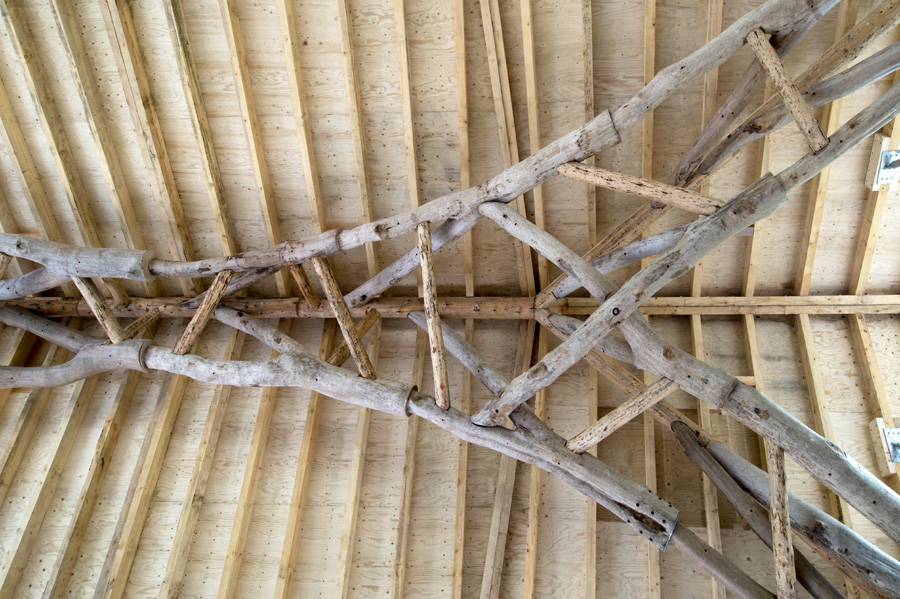 Photo credit: Valerie Bennett[/caption]
[caption id="attachment_12692" align="aligncenter" width="900"]
Photo credit: Valerie Bennett[/caption]
[caption id="attachment_12692" align="aligncenter" width="900"] Photo credit: Valerie Bennett[/caption]
Photo credit: Valerie Bennett[/caption]
Such experiments provoked a critical understanding of the need and scope for experimentation for realizing how digital design and fabrication technique can re-invent traditional methods of ‘making’ to create an architecture that is evidence-based, innovative, yet appropriate to context. Developing the precedent set by Hooke Park’s three twentieth-century buildings by architects and engineers including Frei Otto, the Wood Chip Barn explores an alternative vision of 'digital age' wooden building. 3d scanning and robotic technologies has allowed forks from the Hooke Park forest to be harvested to create a structure with minimal processing and without the use of custom fabricated steel components. With the integration of 3d scanning, robotic-fabrication, and form-finding techniques combined with traditional knowledge, the Wood Chip Barn is an experiment of non-standard architectural production.
Five students of AA Design & Make MArch programme designed and built a robotically fabricated Barn in the woodland at Dorset, England. The students used ‘prototyping’ as ‘vehicles’ for design research, developing modes of experimental architectural design that integrated full-scale making. The ambition of the design was to use found natural junctions/forks in trees – structurally, using 3D scanning as a feedback for the robot-arm to fabricate the structure. The final arching structure of the barn is thus formed from forked beech tree components directly sourced from the surrounding woodland.



The initial responsibility was to survey Hooke Park’s beech compartments in teams, to help in preparing a database of potential forked components, from which the structural concept was developed. Based on the criteria of that concept, 25 forks were harvested from the forest, brought back to the campus, and scanned in 3D. An organization script was used to generate a final arrangement of forks in collaboration with engineers from Arup. This digital model was then translated into fabrication information with which Hooke Park’s new robotic arm transformed each fork into a finished component.





The super structure of the barn consists of a wooden roof, suspended from that arching vierendeel truss composed of twenty beech tree-forks and spanning across 25 m x 10 m to cover 180 sqm area. The truss, after being preassembled in Hooke Park’s Big Shed and all other components, in the yard, were then erected on site under the guidance of Dorset craftsman Jack Draper who coordinated the fabrication and site operations. To aid a productive workflow upto construction stage, the building task was divided in four components: Floor & Wall, Roof, Truss, and Truss legs – each one/two of the students with responsibility of designing and testing these FOUR PARTS to finally combine them onsite into a whole building.







Ar. Mohaimeen from Bangladesh was involved in preparing complete drawing sets and also fabricating components for the floor, wall, roof and making 1:20 model of the actual truss structure. However, his core responsibility at this stage included designing and testing options for the Floor and the Push-wall by making scale models and mock-ups. To test its visual, tactile, and structural integrity, a series of models at 1:20 scale and a mock-up at 1:2 scale, were made to get feedback from the physical objects. At this point, a plan was made to fabricate the various components of the wall which were then to be assembled on site.



Such experiments provoked a critical understanding of the need and scope for experimentation for realizing how digital design and fabrication technique can re-invent traditional methods of ‘making’ to create an architecture that is evidence-based, innovative, yet appropriate to context. Developing the precedent set by Hooke Park’s three twentieth-century buildings by architects and engineers including Frei Otto, the Wood Chip Barn explores an alternative vision of ‘digital age’ wooden building. 3d scanning and robotic technologies has allowed forks from the Hooke Park forest to be harvested to create a structure with minimal processing and without the use of custom fabricated steel components. With the integration of 3d scanning, robotic-fabrication, and form-finding techniques combined with traditional knowledge, the Wood Chip Barn is an experiment of non-standard architectural production.
Project coordination and site management: Jack Draper
Engineers: ARUP (Francis Archer, Naotaka Minami, Coco van Egeraat)
Workshop manager: Charlie Corry Wright
Robotics developer: Pradeep Devadass
Forester: Christopher Sadd
Estate Manager: Jez Ralph
Workshop technician: Edward Coe
Erection team: Timothy Hallbery, James Vooght, Aurimas Bukauskas, Summerbuild Volunteers
| Image gallery |